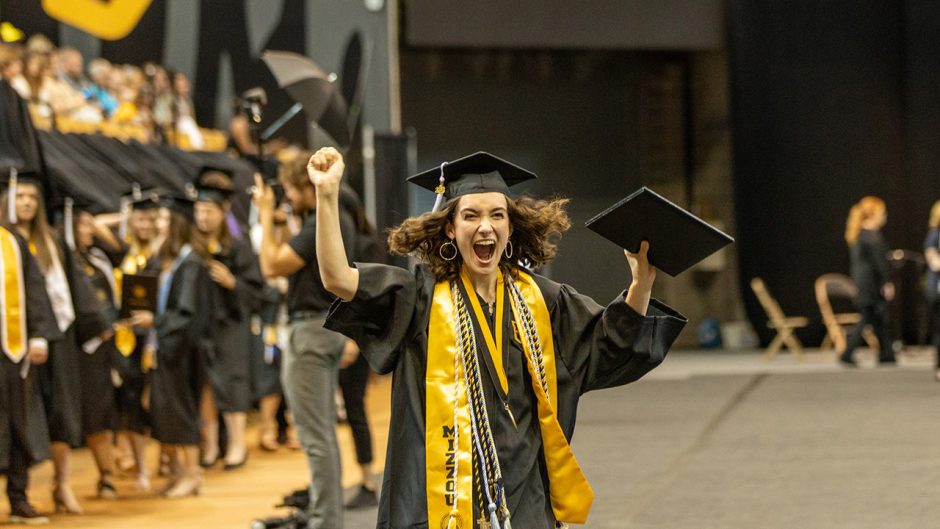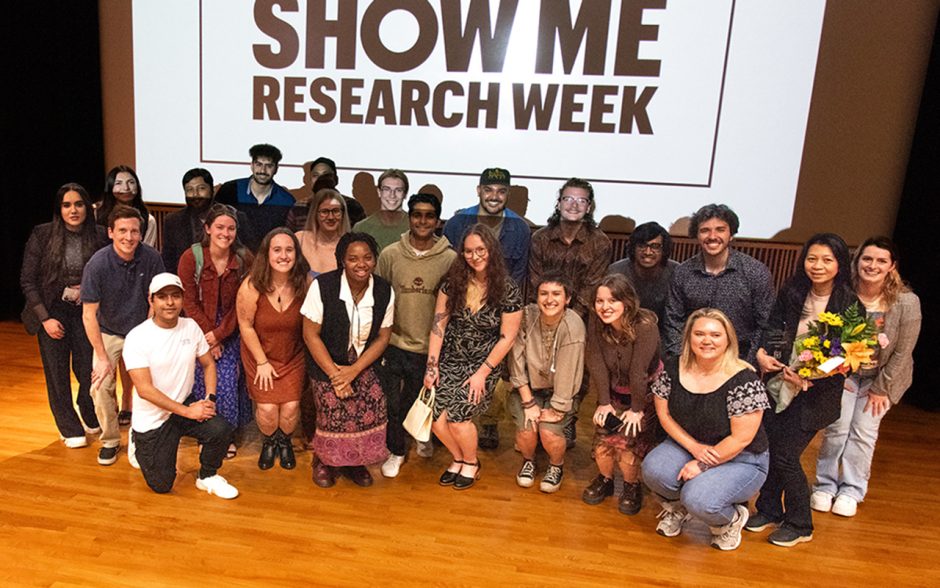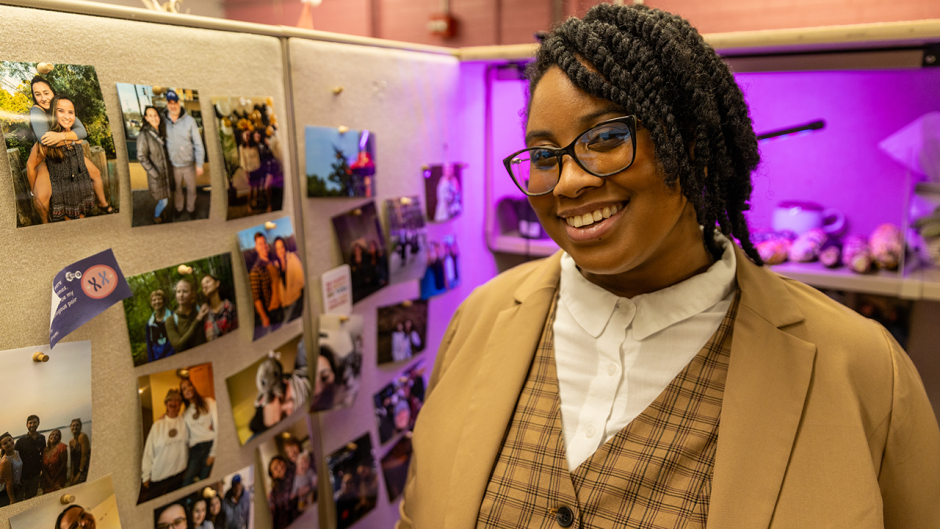
Medical student Scott Miller befriended Brett Sutherland when the 7-year-old patient was undergoing chemotherapy at Mercy Children's Hospital in Springfield. Through a new partnership, Mizzou students provide hands-on care to patients in Southern Missouri.
Medical students absorb a lot of complicated information, but one of Scott Miller’s most memorable lessons came from a 7-year-old finishing two and a half years of chemotherapy. Miller is a third-year MU School of Medicine student and a member of the first student group training with physicians at CoxHealth and Mercy on the new MU Springfield Clinical Campus. The expansion is a bold move to help reduce the physician shortage in Missouri and nationwide.
During a rotation in the St. Jude Affiliate Clinic at Mercy Children’s Hospital, Miller met Brett Sutherland, a brave little boy undergoing his 136th treatment for acute lymphoblastic leukemia. Miller has a tough time watching children suffer as they take on such serious medical challenges. “It’s hard, especially for someone of that age. Not only is it a painful process, it’s an every-week process,” he says. “Many of them don’t know any other life, as the medical interventions have become the norm.”
Chemotherapy drugs are often administered intravenously through a port positioned under the skin. But Brett stayed strong through his nausea, hair loss and severe sores. In clinic, Miller would talk with Brett and family about Brett’s medications and health changes, then stay as Dr. Francisca Fasipe — Miller’s faculty mentor — conducted an examination.
Miller admires Brett’s strength. “The experience helped me realize how resilient and strong kids are. I walked out of that clinic every day with a new outlook on what I’m doing,” he says.
One day in clinic, Miller heard the Springfield Cardinals Minor League baseball team was in the cafeteria signing autographs. Brett loves the Cardinals (and the Kansas City Royals; he’s named after Hall of Fame third baseman George Brett). Miller, too, is a fan. He used a connection with the team to acquire a gift bag of Cardinals gear, which he left at the clinic for Brett. Shaking with excitement, Brett sorted through such treasures as a replica World Series ring, a hat, a T-shirt and an autographed photo.
A few weeks ago, Brett, his family and friends participated in a walk/race to benefit St. Jude’s, where Brett spied Miller and ran to give him a hug. “It was wonderful to see how happy he is and how well he’s doing,” Miller says.
Brett is in remission. He has three more years until he’s considered cured, but his type of leukemia has a 90 to 95 percent survival rate. He invited Miller to his end-of-chemo party.
More Doctors for the Future
MU is committed to enrolling greater numbers of students like Miller to help alleviate the nation’s critical shortage of physicians. For years, administrators have wanted to increase the School of Medicine class size from 96 to 128 students.
Though it’s the smallest of Missouri’s six medical schools, MU’s School of Medicine already provides the state with the most practicing doctors. Still, statisticians predict an increasing need for physicians as the nation’s population ages and more people live with chronic diseases. Missouri’s department of health estimates that 108 of 114 counties lack adequate access to health-care professionals.
The School of Medicine’s twofold plan to train 30 percent more doctors is now underway — with the establishment of the MU Springfield Clinical Campus, where Miller trains, and construction of a new medical education building on the MU campus.
The MU Springfield Clinical Campus welcomed its inaugural class of nine third-year students in June. At full capacity by 2020, Springfield will have 64 third- and fourth-year MU medical students living and training in the area.
On the Mizzou campus, students, faculty and staff broke ground in 2015 on the $42.5 million Patient-Centered Care Learning Center. The facility will open in summer 2017 with six floors of space dedicated to the patient-centered education that forms the core of the school.
The projected financial impact on Missouri’s economy is estimated at $390 million when the expansion reaches its full effect in 27 years.
MU's Springfield Clinical Campus
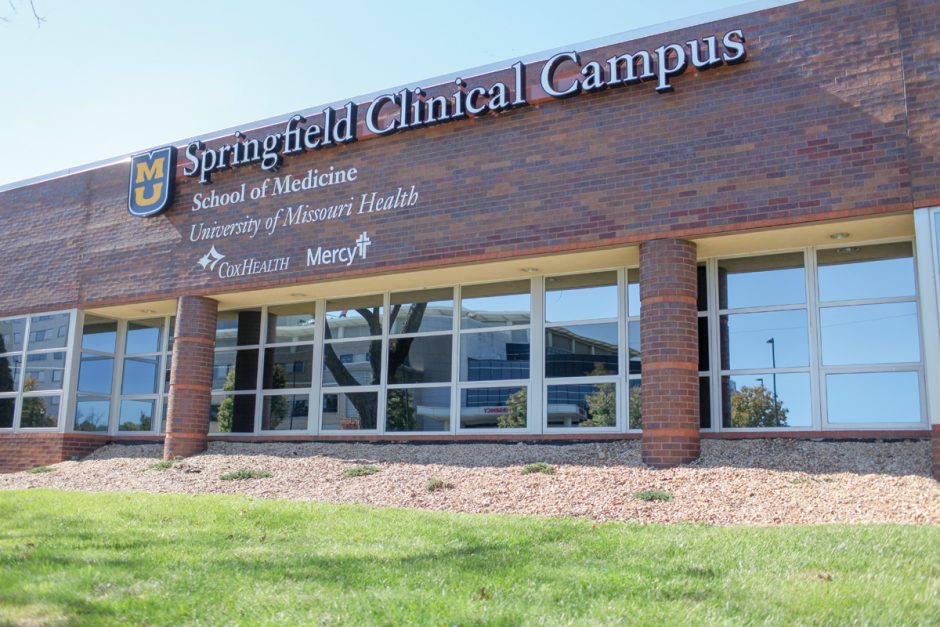
The Springfield Clinical Campus building houses classrooms, student study space and administrative offices and is located near Springfield's two hospitals.
In 2007, Mizzou saw both positive vision and skepticism about opening a clinical campus in Springfield. Weldon Webb, BA ’69, MA ’72, associate dean for the Springfield campus, led the project. In Columbia, Webb had to sell the idea of training students 170 miles from the shadow of Jesse Hall. In Springfield, he had to convince community leaders to accept an MU presence when clearly they wanted their own medical school. Five medical schools already had contacted Steve Edwards, CEO of CoxHealth, about building in Springfield. Cox administrators ran cost analyses, but the price was too high — well over a billion dollars.
The prospect of an MU clinical campus became a constant topic of conversation not only at Springfield Chamber of Commerce meetings but also as part of a community effort aimed at training the next generation of physicians. Having 64 doctors-in-training in Springfield would benefit the region because physicians tend to practice where they have trained. With its two large, competitive health systems — Cox and Mercy — Springfield could offer MU students nonacademic settings for their clinical training. On the recommendation of a national consultant, Cox and Mercy chose the MU plan.
A committed group of central players in Springfield collaborated to make the campus and the MU-Springfield partnership a reality: Jim Anderson, then president and COO of the Springfield Chamber of Commerce; Dr. David Barbe, BA ’76, MD ’80, MHA ’05, vice president for regional operations at Mercy; and Edwards.In addition, administrators of Missouri State University (MSU) made joint legislative calls to help raise funding.
The success of the plan hinged on funding. It was 2008, and the nation was in the midst of a financial crisis, with state budgets tight everywhere. But the state legislature provided $10 million of annual funding, and plans for the clinical campus could proceed.
It took nine long years from a concept in 2007 to the inaugural class in 2016, but MU’s Springfield Clinical Campus is in place, and the partnering continues daily. As its new dean and chief academic officer, Dr. Andrew Evans ensures that medical students’ experience in Springfield produces an educational outcome equivalent to what students receive at the Mizzou campus. Evans, a former MU faculty member, recruited the Cox and Mercy doctors who train the students. MSU assists with campus IT and offers students its recreational facilities and health services.
“Community-based education like this is the best of both worlds. We couldn’t have done it without MU, and MU couldn’t have done it without Mercy and Cox, so this is the epitome of a partnership,” Barbe says.
Art and Architecture
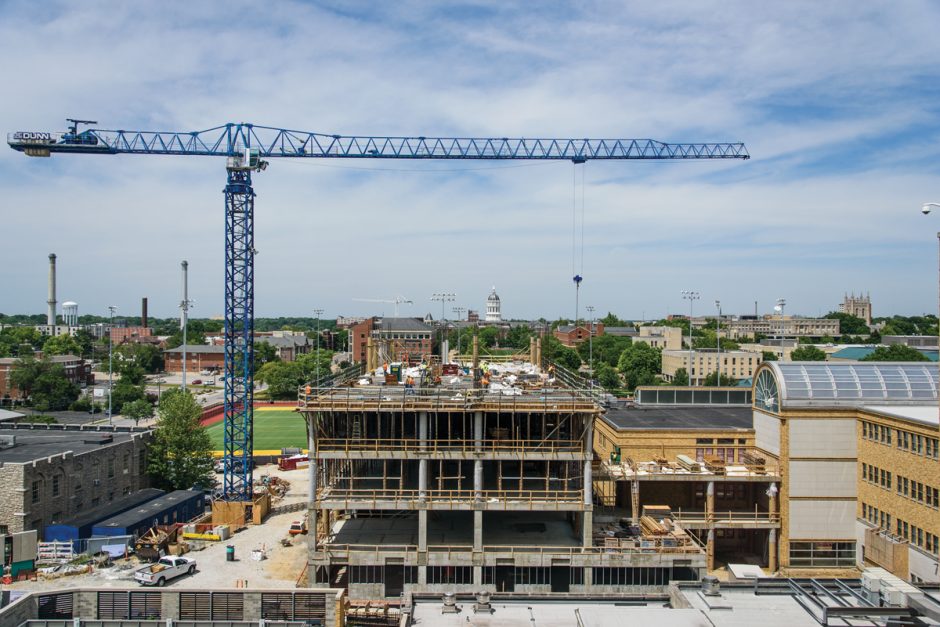
The Patient-Centered Care Learning Center goes up on campus south of Stankowski Field. Scheduled to open in summer 2017, it will provide expanded training space for growing enrollment in the School of Medicine.
Meanwhile on the MU campus, the new Patient-Centered Care Learning Center is under construction. When completed, it will be home base to all first- and second-year medical students. They will learn and socialize on the top two floors, enjoying stunning views of Jesse Hall — a stark contrast to their current basement accommodations.
From its name to its design and artwork, the center will project strong themes about patient-centeredness. “We want people to walk in and be constantly reminded that this is about service to the people of Missouri and beyond,” says Linda Headrick, BA ’77, senior associate dean for medical education.
The center will reflect Missouri’s diversity, history and culture through its artistry and use of natural materials. For example, the stair treads on the front steps will be crafted of gray-vein Carthage limestone salvaged from the Kansas City Power and Light Building, built in 1931. The south walls of elevator lobbies on all six floors will be made of reclaimed Missouri wood decorated with carvings of five rivers — the Missouri, Mississippi, Osage, Current and James — running through the building as they run through Missouri. That wood, too, is a part of Missouri history: white and red oak salvaged from mid-Missouri barns; walnut from a wagon factory in Knox City; hickory from a shoe factory in Palmyra; and pine from a general store in Hannibal that legend says Mark Twain patronized.
Design architects BNIM of Kansas City and planning architects Christner Inc. of St. Louis responded to MU’s patient-based curriculum, whose small-group approach requires very different spaces than traditional lecture-based learning. To create the design, the architects shadowed students, discovered the spatial needs firsthand and designed a warm, welcoming environment with flexible gathering spaces rather than lecture halls.
The facility will use as little energy as possible, thanks in part to an involved daylighting system connected to a smart LED lighting system. An exterior of large, precast concrete panels — with a finish that complements the campus limestone — will almost eliminate air leaks. “We’re using the bones of the building, the thermal mass, to help make the building more comfortable,” says BNIM lead architect Steve McDowell.
The architects from both firms say the new facility is one of their favorite projects. They were touched by the way students learn and by the patient-centric ethos of the school in training future doctors like Scott Miller.

